The two-day Battle of Hampton Roads concluded 150 years ago today when the USS Monitor duked it out with the CSS Virginia. Although the battle was considered a draw, both sides could take pride in their respective ironclads. Here’s a southern take.
From the Richmond Daily Dispatch March 11, 1862:
The Wonderful Naval victory.
We have scarcely recovered from the astonishment with which the whole town was thunderstruck at the astounding news on Sunday. The annals of naval warfare contain no parallel to this extraordinary achievement. It stand alone, unprecedented, and at a single blow has revolutionised the whole system of naval warfares. That a single vessel, and that not of a large size, could be so constructed and so controlled as to demolish three of the largest and most powerful men-of-war in the world, is a prodigy which we can scarcely credit even now. And yet it is so. The Virginia, aided by two or three side wheel steamers and gunboats, has sent to the bottom three war ships, which were the pride of the United States and the wonder of the world. –Hampton Roads, where hostile fleets and transports have so long rode in safety and defiance is now a more unsafe place for the strongest Federal ship than the mid ocean in a tornado. The “perfect failure,” as the Yankees pronounced the Virginia, has proved the much brilliant success of naval architecture and her heroic commander, his officers and man, as well as their comrades of the other vessels, have covered themselves with glory.
Ever since 1842, the United States have been constructing a floating iron battery, called the Stevens battery, at Hoboken, opposite New York, every few years making large appropriations for it, until the aggregate amounted to a million of dollars. Its operations were subducted with the most profound secrecy, not even naval officers being permitted to examine it. And yet, within the last two months a committee appointed by the Federal Congress have decided against it. The Merrimas (now the Virginia) was prepared for her purposes less than a year ago, and constructed amidst difficulties and embarrassments which few can conceive of. Yet those engaged in her persevered with a determination only equalled by the vast energy with which she was fought, and she has already done her work. She has proved as remarkable a triumph of Southern mechanical skill as of Southern valor, and has inaugurated a system of coast defence which, if vigorously pursued, can do more to break the blockade and rid our coast of a fiendish foe than the combined navies of England and France.
Let the South now prepare to dispute in earnest the Northern dominion of our harbors. We must have powerful iron ships hereafter, and they ought to be built without a moment’s delay. We must have twenty Virginias. In the meantime, the one we have– the “Colossus of Roads,” as some wit has already dubbed her — can dispose of any Yankee ships and transports that aspire to a sure and speedy descent to Davy Jones’s locker.
The Stevens Battery was a long and costly project but never successful. On the other hand, many Union “monitors” were built after the Battle of Hampton Roads.

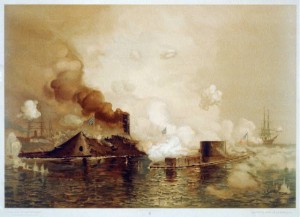
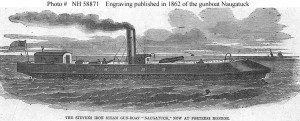
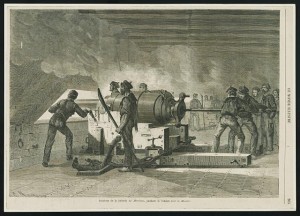
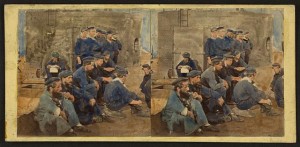
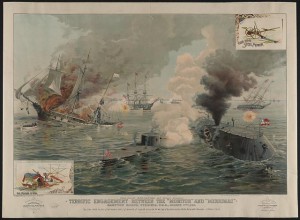
Pingback: Flamethrowers for the Union Army? | Blue Gray Review